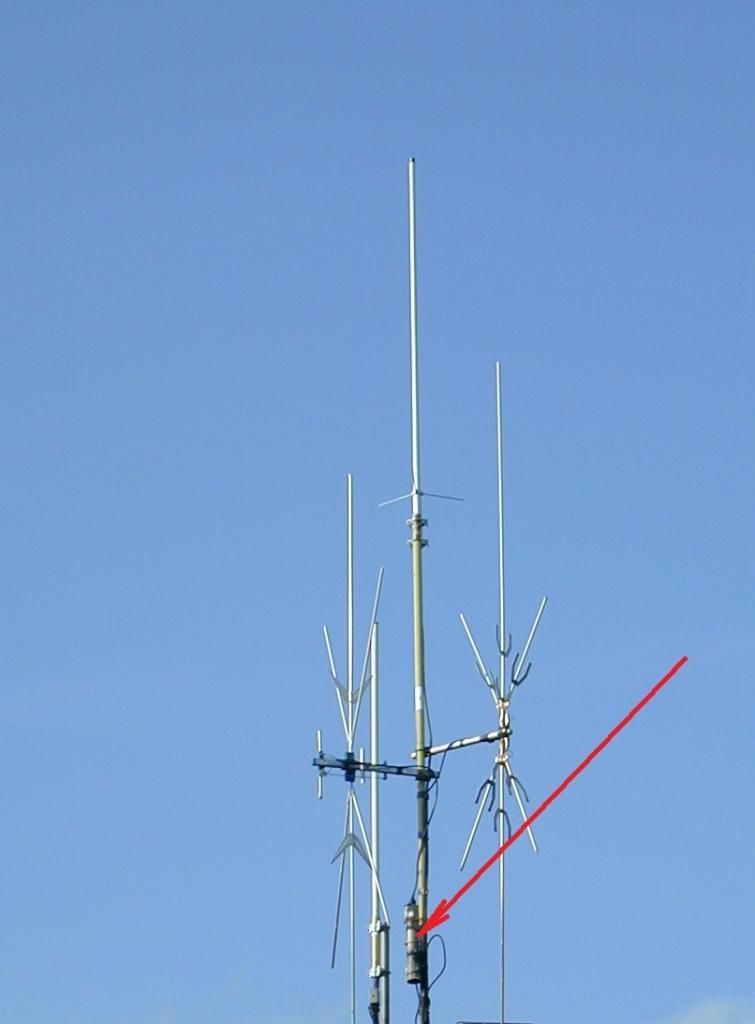prcguy, I am going to challenge most of what you stated above and I would bet that rbm will either agree and/or add to my comments.
First you and everyone must understand that EVERY monitoring configuration and location is different and may have its specific challenges. So regardless of what information has been provided, there can and will be issues that will often need to be addressed and overcome on a case by case basis. This will likely include AT LEAST an FM Broadcast Band notch/reject filter, not necessarily an input Band Pass filter in front of the LNA. In some cases it may may sense for an input Band Pass filter, but this will usually drive up the system cost quickly and may limit the broadband nature of the receive system..
Additionally, an LNA with less gain in more urban and city ares is almost always better than a very high gain LNA. Even most high gain LNA's have multiple gain stages which are not ideal to have in a single package. This can and will often overdrive the receiver on the end of the feedline and sometimes added attenuation may be required at the input of the receiver depending on the receiver specifications, the length and type of feedline and the Pre-Amplifier total gain. As I stated it is often better to have a lower gain Amplifier than a higher gain Amplifier.
I have to fully disagree with this statement you made " If I had taken your preamp advice that didn't include a band pass filter you would have wasted my money and wreaked my reception."
I would NOT have wasted YOUR money or wreaked your reception. Going in, people do need to understand that sometimes adding a Pre-Amp is a process and it may not be a simple single purchase and installation.
I can almost guarantee that what happened in your case was a multifold problem.
1. The Pre-Amp you purchased had too high a gain and the receiver was over driven
2. The Pre-Amp you purchased had too low of a 3rd order IMP
3. The Pre-Amp you purchased had too high of a Noise Figure.
4. You DID NOT purchase and install a FM Broadcast Notch filter.which is almost ALWAYS required in city/urban monitoring locations.
The Mini-Circuits Pre-Amp I recommended is only a 13 dB gain Amplifier, much lower than the typical 20-30 dB gain Pre-Amps that are often purchased and use. Additionally I recommend and suggested a very specific FM Broadcast notch/rejection filter. I went though 7 different FM Broadcast notch/reject filters before I found one that was adequate for my requirements. I also think I suggested a few options for Bias-T configurations to remotely power the Pre-Amp over the coax.
You stated you live in LA, I did live there for a period of time and also did a fair amount of work in the Land Mobile and Cellular industry while I was there, I am fairly familiar with that goes on in your area. But I live in the Washington, DC area about 10 miles as the crow flies from the White House. I have all the major Metro area AM, FM and TV Broadcast towers typically between 3 and 10 miles from my antennas. I have 2 - 22 kiloWatt FM Broadcast transmitters within 3.5 miles and a 75 kiloWatt FM Broadcast transmitter within 5 miles of where I live.
So based on my recommendation, in all but the most severe cases the LNA and FM Broadcast notch/rejection filter should work reasonably well to exceptional in most cases.
You may or may not have seen this post that outlined the equipment in more detail:
https://forums.radioreference.com/s...mp-10-off-december-other-useful-rx-items.html
From the sounds of it, you are trying to monitor Aircraft band with the set up you have, in this situation if you did not want to try a decent wideband LNA setup like I recommended, you should specifically consider something like this for Aircraft band reception -
Airband LNA preamplifier with airband band pass filter aviation RTL SDR aviation
So while I appreciate your comments, understand that what I have recommended should work for all but the most severe environments and if this set up has issues, if you would have followed my advice, I doubt I would have wasted YOUR money. I would hope that someone would contact me directly for advice if there were problems as I would be in a pretty good position to help solve any problems.
I have a fair amount of experience in RF receive and distribution systems and it is NOT uncommon for people to over driver a signal path when they do not have proper experience and make unwise choices in hardware. Even the best of intentions often end in poor results. I would still recommend a decent Pre-Amp/FM Broadcast Band notch/reject filter over spending the same amount of money on expensive coax that may be hard to install and properly terminate.



